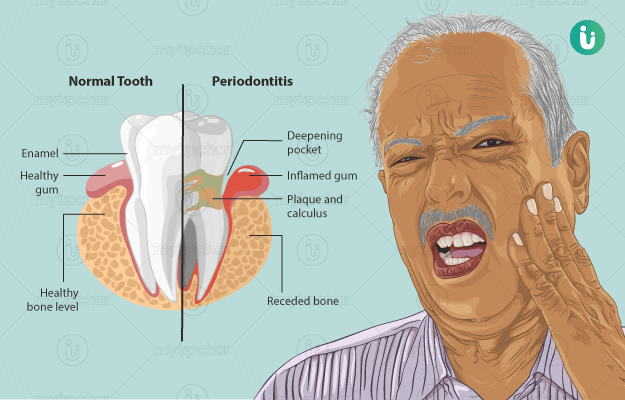What is Gum disease (Periodontitis)?
Gum disease or periodontitis is the infection of the gums immediately surrounding the teeth due to prolonged neglect of oral hygiene. This condition is caused by the buildup of plaque and if not treated, it causes bleeding gums and can even lead to total teeth loss.
Further, in case of gum disease, gum tissue leaves the teeth to create pockets that are an invitation to plaque and bacteria, which aggravates the condition.
What are its main signs and symptoms?
Gum disease symptoms include:
- Yellowish buildup on teeth.
- Plaque buildup that gets hardened on the tooth edges.
- Consistent bad breath.
- Bleeding or painful gums.
- Receding gum tissue.
- Loose teeth.
The condition is often associated closely with gingivitis in which the gums are infected. It is often considered as a precedent for periodontitis.
What are its main causes?
Gum disease is triggered by a lack of oral hygiene. This allows bacteria to create plaque on the teeth margins and if untreated, the plaque may become calcified. This debris is then termed as tartar.
However, the cause is not limited to lack of poor hygiene, but can also be due to hormonal imbalance and stress. Also, illness and immune diseases can impact the elasticity of the gums.
How is it diagnosed and treated?
In gingivitis, the condition can be detected by visual examination of gums. At this stage, the gums become red and swollen due to bacterial growth.
The advanced stages of the condition can be detected by the plaque buildup on the teeth that is hard to get rid of. For a detailed diagnosis, a visit to the dentist is imperative. Here, the expert view of the condition may confirm the occurrence of the gum disease by:
- A probe that can be inserted to measure the depth of the pockets. This is a painless procedure.
- Medical or family history to assert the prognosis.
- Undertake X-ray to confirm bone loss and plaque buildup.
A dentist can help in the initial stages of the disease and try to remove the plaque buildup or tartar. This should settle the inflammation in most cases. After the treatment, regular teeth cleanup i.e., brushing and flossing are needed to keep the build-up away. It is advisable to visit the dentist every 3 months post the cleanup to repeat the process.

 Doctors for Gum Disease (Periodontitis)
Doctors for Gum Disease (Periodontitis)  OTC Medicines for Gum Disease (Periodontitis)
OTC Medicines for Gum Disease (Periodontitis)



















